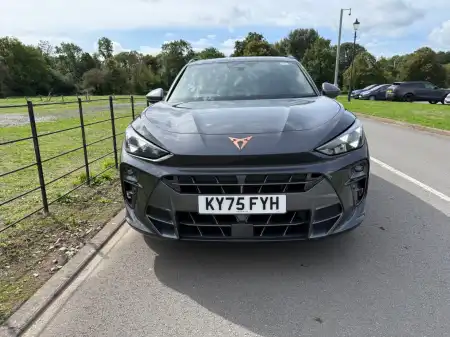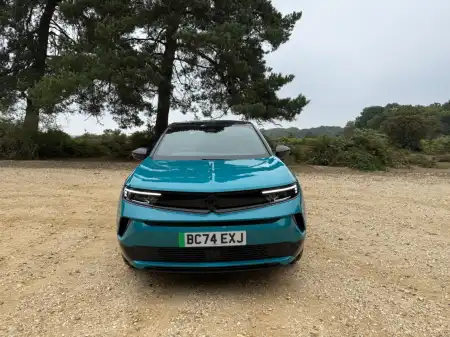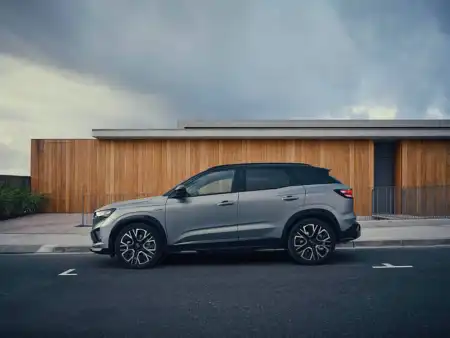- Extremely easy to drive
- Spacious with lots of kit as standard
- Style will turn plenty of heads
- Wind noise when travelling at high speeds
- Rear windows make travelling in the back feel claustrophobic
- CVT makes Hybrid sluggish and noisy
Introduction
C-HR (Coupé High-Rider) is the Japanese car-maker’s first shot in a very competitive and saturated compact crossover segment. So, in order to differentiate, Toyota said they wanted to take a whole new direction. Have they succeeded? We think so. From the gemstone-like theme patterned interior, to the sleek and eye-catching exterior, this could well be the most advanced car in its segment.
We were invited to the European launch in Madrid to test the car in the glorious Spanish sun. Through the busy backstreets and picturesque mountains surrounding the city, we tested the 1.2 Dynamic manual petrol priced at £25,495 and 1.8 Hybrid CVT priced at £27,995. Read on to find out what we thought.
On The Road
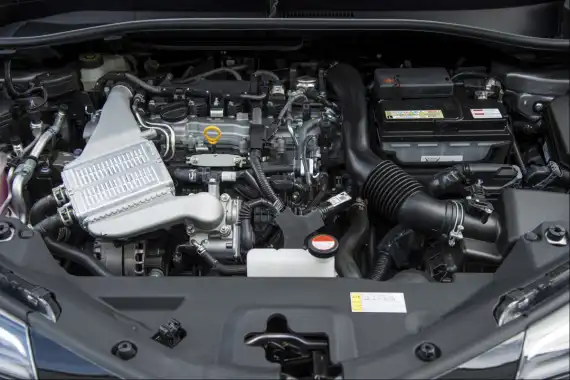
Performance
If you only ever buy diesel, this car isn’t for you. They aren’t making a diesel engined model. You can choose from a 1.2 litre turbocharged petrol engine, available in FWD (6-speed manual only) and 4WD, or a 1.8-litre petrol engine and electric motor, sending the combined power into the front wheels via an automatic (CVT) gearbox. Each across three different grades, Icon, Excel and Dynamic.
You can expect the performance of the petrol to be on par with its competitors - Qashqai and Ateca - with 185nM of torque and a 0-62 time of 10.9 seconds. If you’re thinking about going for the 1.2 petrol, we’d recommend the 6-speed manual. It provides a much more enjoyable experience and suits the car's personality perfectly. You’ll also get what Toyota call ‘Intelligent Manual Transmission’, which rev matches upshifts as well as downshifts.
The hybrid sits on the same platform and powertrain as the Toyota Prius, but the crossover is heavier which diminishes experience slightly as we explain in ‘Ride & Handling’.
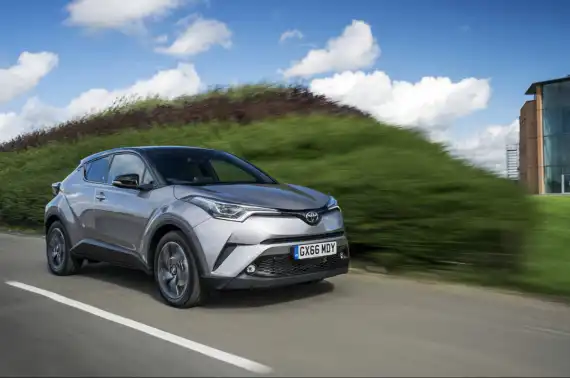
Ride Handling
C-HR was designed and engineered for Europe, but there are now plans to put on sale in Japan and the US. Chief engineer Hiroyuki Koba thinks the car will appeal to Europeans who can actively outsmart traffic and steer through a hazard without having to stop and think about it. We can do that?
Both the petrol and hybrid were tested on 18” alloys, giving ultimately two very different and quite noticeable experiences when it comes to ride. The petrol model, which is slightly lighter than its counterpart didn’t bounce over the part-road, part-gravel when it was briefly taken off route, a very pleasant surprise. The additional weight in the Hybrid was noticeable though and will be interesting to see just how it fairs in the UK on our pothole ridden highways.
In terms of handling, this carmakers first attempt in the c-segment is remarkably agile despite the crossover label. Through the tight corners, twists and turns Spain has to offer, C-HR performed extremely well. Steering is accurate and the car provides consistent, controlled body roll through corners, even at high speeds.
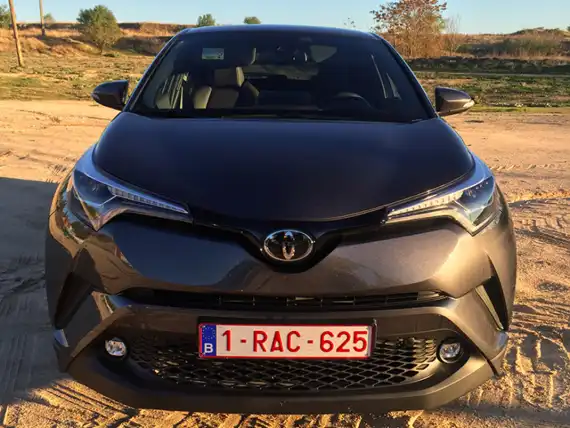
Styling
Looking back on the first concept unveiled at Paris Motor Show in 2014, C-HR has changed very little and has stayed relatively true to the initial, bold design. Perfect for the target buyer.
Toyota’s desired customer is a young, early adopter who travels a lot and drives in towns and cities. Unsurprisingly, this is why the Hybrid is expected to make up about 75% of sales and where it comes into its own. Driving through Madrid at low speeds, the engine was much quieter and the car was more enjoyable to drive than the petrol manual alternative. Sadly, once you leave 30mph zones and acceleration is required, the petrol engine kicks in which is noisy and sluggish.
This is because C-HR features CVT (continuously variable transmission) - available across Icon, Excel & Dynamic - rather than standard automatic transmission. When you put your foot to the floor to speed up, the revs rise, the petrol engine kicks in and an annoying humming noise fills the cabin drowning out conversation.
The 1.2 petrol alternative features a 6-speed manual gearbox and felt more refined than Nissan’s Qashqai and Renault’s Kadjar, seamlessly shifting through gears.
In The Car
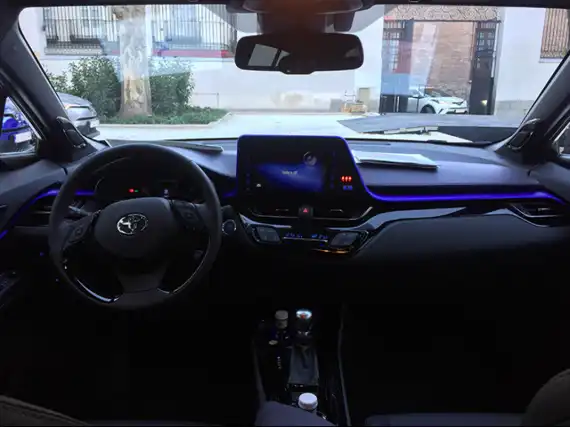
Behind the Wheel
Nowadays some car manufacturers offer an extremely basic model. No one actually buys it due to its lack of kit. They just use it to lower the price point. Toyota haven’t done this and it should be lauded. C-HR’s most basic model, the Icon, is stacked with kit. As well as Toyota Safety Sense (explained in ‘Safety & Security’), you get Toyota Touch, a seven-inch touchscreen, rear view camera and audio system as well as 17-inch alloys.
Toyota haven’t just limited the striking design to the exterior. Step inside and you’ll notice the gemstoned pattern that flows throughout as well as the stylish line that makes the cabin feel even more spacious stretching across the dashboard. The area around the driver is welcoming and the touchscreen display is extremely responsive. You really have to question whether you’re actually sat in a Toyota. Yes, yes you are.
Oh, and if you buy cars based on how the steering wheel feels, well it’s soft and comfortable. Much more to be said than the Qashqai’s, which is plasticy and hard. Let’s hope the finish and level of detail inside is a sign of things to come from Toyota.
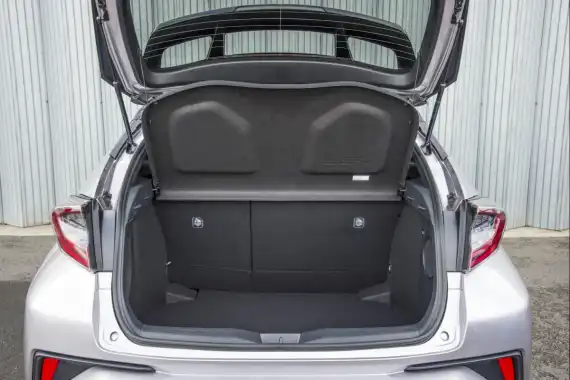
Space & Practicality
C-HR is 4.36 metres long, making front and back fairly spacious and comfortably seating adult behind adult. That’s more or less the same length as Nissan’s equivalent. Despite this, the boot space within C-HR with seats up is only adequate, at 377 litres, much smaller than Qashqai’s 430 litres.
The car is uniquely styled - specifically at the rear - to look smaller than it is, but something has got to give, and it lets the car down. In the rear, despite being spacious and comfortable, both adults and children will likely feel claustrophobic and dark due to the small back windows. Add tinting available on Excel and Dynamic grades and you’ll struggle to tell what time of day it is.
Ownership
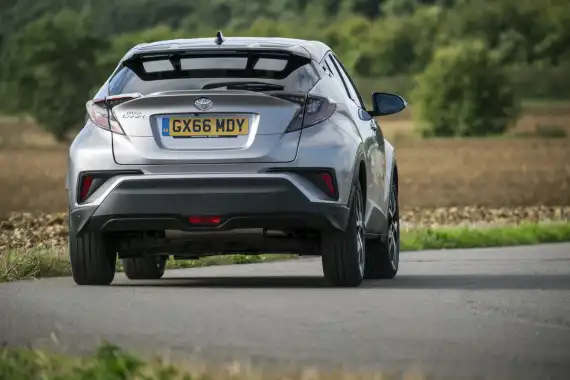
Running Costs
The cheapest manual petrol starts at £20,995, or about £229 per month with 5.9% APR and 20%-25% deposit. This rises to £25,495 for the Dynamic grade. The cheapest Hybrid model available starts at £23,595 and rises to £27,955.
In comparison, C-HR is more expensive than Qashqai (from £18,490), Kadjar (from £18,095) and the highly rated Ateca (from £17,935).
For the models we had on test, Toyota states the 1.8 Hybrid - 87g/km of CO2, tax band A, £0 per year - will deliver a combined 72.4 mpg. The 1.2 manual petrol - 135g/km of CO2, tax band E, £130 per year - will deliver a combined 47.1 mpg.
As with other Toyota models, C-HR is covered by the five-year/ 100,000-mile new vehicle warranty. Recommended servicing requirements are yearly, or every 10,000 miles, whichever falls earlier.
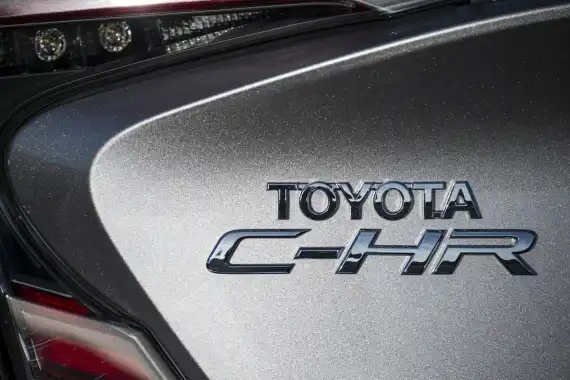
Quality & Reliability
C-HR follows the new, fourth generation Prius as the second production model to use the GA-C platform. This basic design allows for a low centre of gravity to be achieved and in this case, Toyota claim it is class-leading.
Traditionally, Prius owners have always rated reliability very highly and if that is anything to do with the platform and powertrain, C-HR could turn out to be good bang for your buck.
In terms of residual value, Toyota has predicted higher than average figures. After 3 years and 30,000 miles, expect C-HR to have held over half its new purchase-price value.
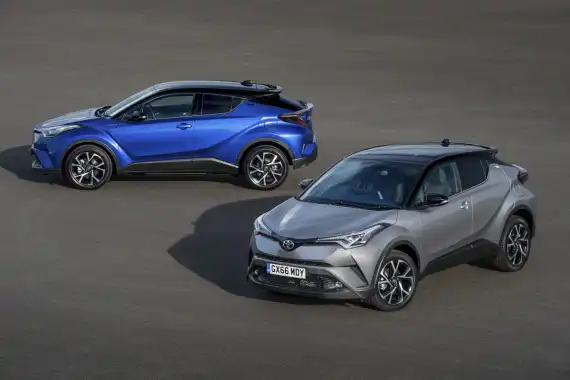
Safety & Security
All C-HR models across Icon, Excel and Dynamic benefit from Toyota Safety Sense. This is a package of activity safety systems that can alert the driver to collision risks and will intervene to avoid impact or attempt to reduce the consequences if a collision is unavoidable. The system includes Pre-Collision System with autonomous emergency braking and pedestrian recognition, Lane Departure Warning, Traffic Sign Recognition, Automatic High Beam headlight operation and Adaptive Cruise Control.
For those with babies and young children, ISOFIX child seat restraints are standard across all models. As we mentioned earlier, plenty of kit as standard.
Want more? The Excel and Dynamic grades also include Blind Spot Monitor and Rear Cross Traffic Alert.

